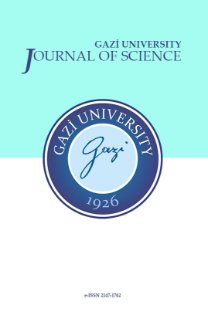Physicochemical and Palynological Characterization of the Onobrychis Miller (Fabaceae) Honey
Onobrychis honey, Fabaceae, Pollen analysis, Physicochemical analysis,
___
- [1] Anjos, O., Iglesias, C., et al., (2015), Neural networks applied to discriminate botanical origin of honeys, Food chemistry, 175: p. 128-136.
- [2] Anklam, E., (1998), A review of the analytical methods to determine the geographical and botanical origin of honey, Food chemistry, 63(4): p. 549-562.
- [3] Bryant Jr, V. M., & Jones, G. D. (2001). The r‐values of honey: Pollen coefficients. Palynology, 25(1), 11-28.
- [4] Ohea, W.V.D., Oddo, L.P., et al., (2004), Harmonized methods of melissopalynology, Apidologie, 35: p. S18-S25.
- [5] Tornuk, F., Karaman, S., et al., (2013), Quality characterization of artisanal and retail turkish blossom honeys: Determination of physicochemical, microbiological, bioactive properties and aroma profile, Industrial Crops and Products, 46: p. 124-131.
- [6] Alimentarius, C., (2001), Codex standard 12, Revised Codex Standard for Honey, Standards and Standard Methods, 11.
- [7] Kaškonienė, V., Venskutonis, P., Čeksterytė, V., (2010), Carbohydrate composition and electrical conductivity of different origin honeys from lithuania, LWT-Food Science and Technology, 43(5): p. 801-807.
- [8] Codex, T.F., (2012), Turkish food codex, honey notification (2012). T.C. Ministry of agriculture and rural affairs (no: 2012/58)
- [9] Demir, M., (2014), Kars İlİnİn aricilik potansİyelİ ve değerlendİrme durumu, Eastern Geographical Review, 19(32).
- [10] Akman, Y., Dage, P., (1981), Problèmes posés par la détermination des climats méditerranéens, Communications de la Faculte des sciences de l'Universite d'Ankara. Serie C2. Botanique.
- [11] Cronquist, A., (1981),An integrated system of classification of flowering plants. Columbia University Press.
- [12] Zohary, M., Zohary, M., (1987), Linum l, Flora Palaestina, 2: p. 258-264.
- [13] Aktoklu, E., (1995), Türkiye’de yetişen onobrychis miller (fabaceae) türlerinin revizyonu, Doktora tezi. İnönü Üniversitesi Fen Bilimleri Enstitüsü, Biyoloji Anabilim Dalı, 134.
- [14] Davis, P.H., (1965),Flora of turkey and the east aegean islands. Vol. 10. Edinburgh University Press.
- [15] Duman, H., Vural, M., (1990), New taxa from south anatolia i, Doğa, Türk Botanik Dergisi, 14(1): p. 39-48.
- [16] Hedge, I., (1970), Onobrychis adans, Flora of Turkey and east the Aegean Islands, 3: p. 560-589.
- [17] Yildirimli, S., (2006), A new species and subspecies of, Onobrychis, O. cigdemae: p. 1-10.
- [18] Cavallarin, L., Antoniazzi, S., Borreani, G., Tabacco, E., (2005), Effects of wilting and mechanical conditioning on proteolysis in sainfoin (onobrychis viciifolia scop) wilted herbage and silage, Journal of the Science of Food and Agriculture, 85(5): p. 831-838.
- [19] Parlak, A.Ö., Parlak, M., (2008), Effect of salinity in irrigation water on some plant development parameters of sainfoin (onobrychis viciifolia scop.) and soil salinity, Tarim Bilimleri Dergisi-Journal of Agricultural Sciences, 14(4): p. 320-325.
- [20] Pellett, F.C., (1947),American honey plants. Orange Judd.
- [21] Knuth, P., (1908), Handbook of flower pollination, volume ii.
- [22] Kropacova, S., (1969), The relationship of the honeybee to sainfoin (onobrychis sativa), Proc. 22nd Int. Beekeep. Cong. Munich.
- [23] Kaya, Z., Binzet, R., Orcan, N., (2005), Pollen analyses of honeys from some regions in turkey, Apiacta, 40: p. 10-15.
- [24] Sorkun, K., Dogan, C., (1995), Pollen analysis of rize-anzer (turkish) honey, Apiacta, 30: p. 75-82.
- [25] Louveaux, J., Maurizio, A., Vorwohl, G., (1970), Internationale kommission für bienenbotanik der iubs methodik der melissopalynologie, Apidologie, 1(2): p. 193-209.
- [26] Louveaux, J., Maurizio, A., Vorwohl, G., (1978), Methods of melissopalynology, Bee world, 59(4): p. 139-157.
- [27] Moar, N., (1985), Pollen analysis of new zealand honey, New Zealand Journal of Agricultural Research, 28(1): p. 39-70.
- [28] Wolski, T., Tambor, K., Rybak-Chmielewska, H., & Kedzia, B. (2006). Identification of honey volatile components by solid phase microextraction (SPME) and gas chromatography/mass spectrometry (GC/MS). Journal of Apicultural Science, 50(2), 115-126.
- [29] Çelemli, Ö.G., Sorkun, K., Salih, B., (2012), Chemical composition of propolis samples collected from tekirdag-turkey, Mellifera, 12(24).[30] Bogdanov, S., Martin, P., Lullmann, C., (2002), Harmonised methods of the international honey commission, Swiss Bee Research Centre, FAM, Liebefeld.
- [31] Hammer, Ø., Harper, D., Ryan, P., (2001), Past-palaeontological statistics, ver. 1.89, Palaeontologia electronica, 4(1): p. 1-9.
- [32] Silici, S., Gökceoglu, M., (2007), Pollen analysis of honeys from mediterranean region of anatolia, Grana, 46(1): p. 57-64.
- [33] Yurtsever, N., Sorkun, K., (2005), Determination of botanical origin of the honey produced in the kemaliye-erzincan region in eastern turkey by microscopical and organoleptical analyses, Mellifera, 5(9).
- [34] Čeksterytė, V., Kurtinaitienė, B., Balžekas, J., (2013), Pollen diversity in honey collected from lithuania’s protected landscape areas, Proceedings of the Estonian Academy of Sciences, 62(4): p. 277-282.
- [35] Sorkun, K., Dogan, C., (2002), The importance of the total number of pollen types in 10 gr of honey in distinguishing between natural honey and artificial honey produced in turkey, Mellifera, 2(3).
- [36] Jones, G.D., Bryant, V.M., (2014), Pollen studies of east texas honey, Palynology, 38(2): p. 242-258.
- [37] Primorac, L., Bubaloa, D., et al., (2008), Pollen spectrum and physicochemical characteristics of croatian mediterranean multifloral honeys, DEUTSCHE LEBENSMITTELRUNDSCHAU, 104(4): p. 170.
- [38] Karabournioti, S., Zervalaki, P., (2001), The effect of heating on honey hmf and invertase, Apiacta, 36(4): p. 177-181.
- [39] Pérez-Arquillué, C., Conchello, P., et al., (1995), Physicochemical attributes and pollen spectrum of some unifloral spanish honeys, Food chemistry, 54(2): p. 167-172.
- Yayın Aralığı: 4
- Başlangıç: 1988
- Yayıncı: Gazi Üniversitesi, Fen Bilimleri Enstitüsü
Vibrations Of A Rotating Disk Under Perpendicular Spacefixed Forces
Olcay OLDAÇ, Hilal KOÇ, Ekrem TÜFEKÇİ, Ömer Ekim GENEL, Mertol TÜFEKÇİ
On 3-Dimensional Trans-Sasakian Manifold Admitting a Semi-Symmetric Metric Connection
Srivaishnava Vasudeva VISHNUVARDHANA, Venkatesh VENKATESHA, Aysel Turgut VANLI
Optimal Allocation of Different Types of Distributed Generators in Distribution System
Suresh Kumar SUDABATTULA, Kowsalya MUNISWAMY
Nil KOKULU, Seden ACUN OZGUNLER
Munteha Nur SONUÇ KARABOĞA, Elif LOĞOĞLU
Srivaishnava Vasudeva VISHNUVARDHANA, Venkatesh VENKATESHA, Aysel TURGUT VANLI
